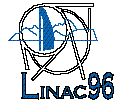 Conference
Conference Conference
ConferenceThe current machines produce photon beams with energies ranging from about 4 to 20 MV. This energy range is sufficient to treat most of the tumours, even those which are deep seated. Attenuation of the photon beams in the tissues is nearly exponential and, in typical conditions, 50% of the maximum dose is obtained at 17 cm in depth for a 8 MV beam and at 20 cm in depth for a 18 MV beam. A treatment is rarely performed with a single beam, but a combination of several beams adequately orientated allows the radiation-oncologist to deliver the prescribed dose to the target volume without exceeding the tolerance of the surrounding normal tissues.
In addition modern linacs allow us to apply electron beam therapy. Electron beams have, in the tissues, a limited penetration which depends on energy. Electron beam therapy is thus suitable to treat superficial (or semi-deep seated) tumours; it is often used as a "boost" and is then combined with photon beam therapy.
Special techniques using linacs are reviewed: total body irradiation for bone marrow grafting and stereotactic radiosurgery with photon beams, total skin irradiation and Intra-Operative-Radiation-Therapy (IORT) with electron beams. Lastly, conformation therapy is at present a very promising field in great expansion. It aims at matching as close as possible the actually treated volume and the clinical target volume. Conformation therapy requires accurate acquisition of patient data, 3-D treatment planning and a strict quality assurance programme.